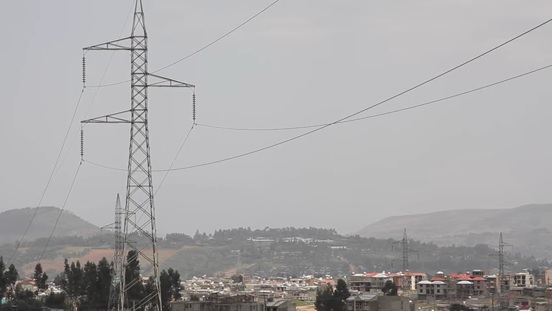
Despite major strides in the energy sector, the country still has the second largest energy access (electricity access) deficit in Sub-Saharan Africa (after Nigeria), and the third in the world.
WASHINGTON, D.C. (WB)–The World Bank, on 1st March 2018, approved a $375 million International Development Association (IDA) credit to support Ethiopia’s goal of achieving universal electricity access by 2025.
Ethiopia has the second highest available generation capacity in Sub-Saharan Africa with nearly 100 percent coming from renewable energy generation (mostly hydropower), and vast and mainly untapped solar, wind, and geothermal clean energy resources. Over the past decade, the Government has launched one of the most successful electrification programs in Sub-Saharan Africa, expanding the grid network coverage to nearly 60 percent of towns and villages.
Despite these major strides in the sector, the country still has the second largest energy access deficit in Sub-Saharan Africa (after Nigeria), and the third in the world. Household connections have not kept pace with network expansion: 70 percent of the population still lives in the dark, and only 24 percent of primary schools and 30 percent of health centers have access to electricity services.
In November 2017, Ethiopia, with support from the World Bank, launched its National Electrification Program (NEP) to strategically shift from infrastructure development to the delivery of adequate, reliable and affordable electricity access and services. The NEP is sustainable, transparent, and locally grounded electrification roadmap – driven by a customer centric approach. The program has the potential to leverage additional multi-donor financing and involvement in the sector.
The Ethiopia Electrification Program approved today will directly support the NEP – which requires an estimated investment of $1.5 billion over the first five years – and provide one million last-mile household connections.
“Through this program, we hope to facilitate the provision of electricity services to all Ethiopians nationwide by 2025. This means that children will be able to study at night, health facilities will be able to provide life-saving services and businesses will be able to operate optimally,” said Carolyn Turk, World Bank Country Director for Ethiopia.
Specifically, the program supports the three pillars of the NEP: grid electrification, off-grid services, and sector capacity and institutional reform. This holistic approach is intended to optimize electrification efforts to maximize the development impact of electricity services, irrespective of where someone happens to live.
“While the immediate focus will be on financing new connections, the program will also help Ethiopia strengthen its energy institutions and the overall sector, so that the benefits of expanded electricity services can continue for years to come,” said Riccardo Puliti, Senior Director for Energy and Extractives at the World Bank.
The Ethiopia Electricity Program is aligned with the World Bank Group’s twin goals of ending extreme poverty and promoting shared prosperity, the Country Partnership Framework for Ethiopia, the Sustainable Development Goal 7, as well as the Sustainable Energy for All Initiative.
ALSO: Wind Project Development Roadmap: Blueprint for Ethiopian wind power expansion
The Program will be implemented by the Ministry of Water, Irrigation, and Electricity as well as the Ethiopia Electric Utility and disbursement of funds are linked to the achievement of tangible and specific results.
The Program complements the World Bank’s existing portfolio of over $1.5 billion in the power sector, encompassing generation, transmission, distribution, off-grid service provision, an extensive package of technical assistance in the sector, as well as gender and citizen engagements activities.
Source: The World Bank
